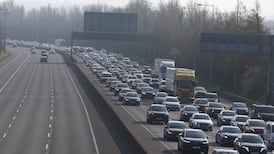Shortcomings and misalignments within the ambulance services have represented a low-level public scandal for many years, but it would seem the Health Service Executive required expensive, formal reports to spell out those inadequacies. Now that those reports have been published, reforms and funding will be required. That should not, however, distract from a need to speed up ambulance response times.
Complaints arising from fatal delays are most frequent in isolated, rural regions – as highlighted by this newspaper. That situation may be due to relatively high populations in these areas; a low number of ambulance call-outs and the location of ambulance services. Even in urban areas, however, ambulance drive times are nearly ten minutes, compared to four minutes in high-performing countries.
Two major shortcomings, both involving areas of traditional demarcation, have been identified by recent reports. The first relates to the nature of the service provided by ambulance crews and community first responders. They have been allowed to deal with life-threatening situations on site in recent years. But their primary function remains to convey injured people to hospital. In other European countries about 40 per cent of call-out cases are treated at the scene by paramedics and hospital admissions are avoided.
Such a change here would require special medical training and additional investment. But with gross overcrowding affecting A&E services, it would bring major benefits. The second problem arises from lack of co-ordination between existing services. Dublin Fire Brigade controls ambulances in the city while the National Ambulance Service, run by the HSE, directs all other services. Efforts to centralise these operations and improve call-out times have been referred to the Labour Court. The time for talking about these problems has passed. The Government and Minister for Health Leo Varadkar aspire to doing things differently, more effectively. In rebuilding the economy, basic public services will have to be restructured and medical demarcation lines removed.








